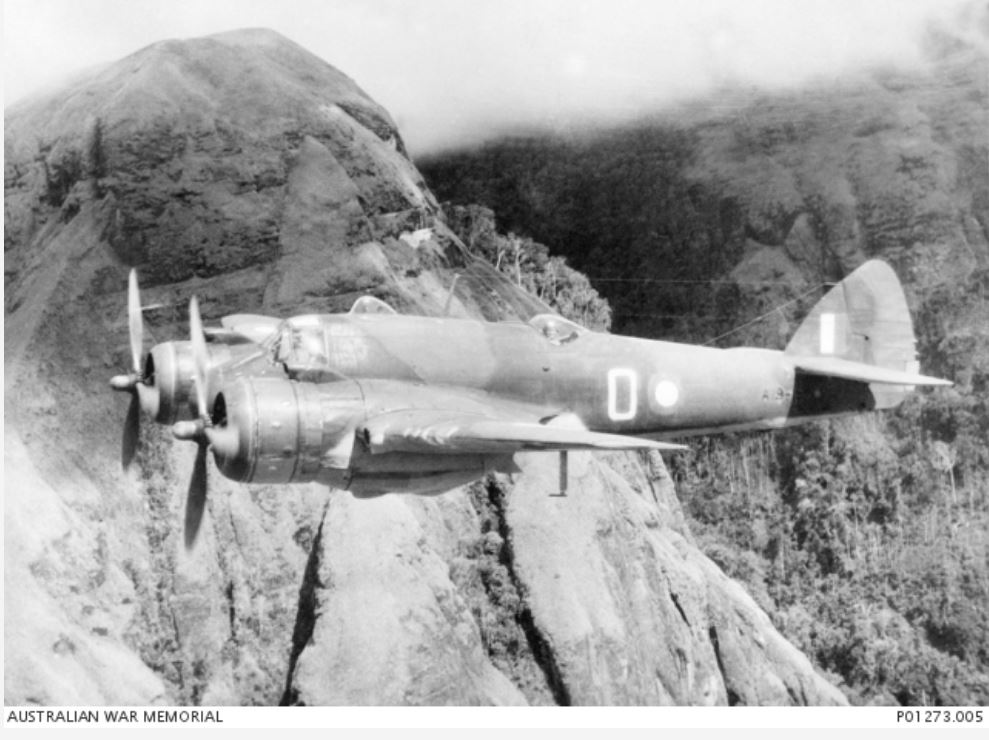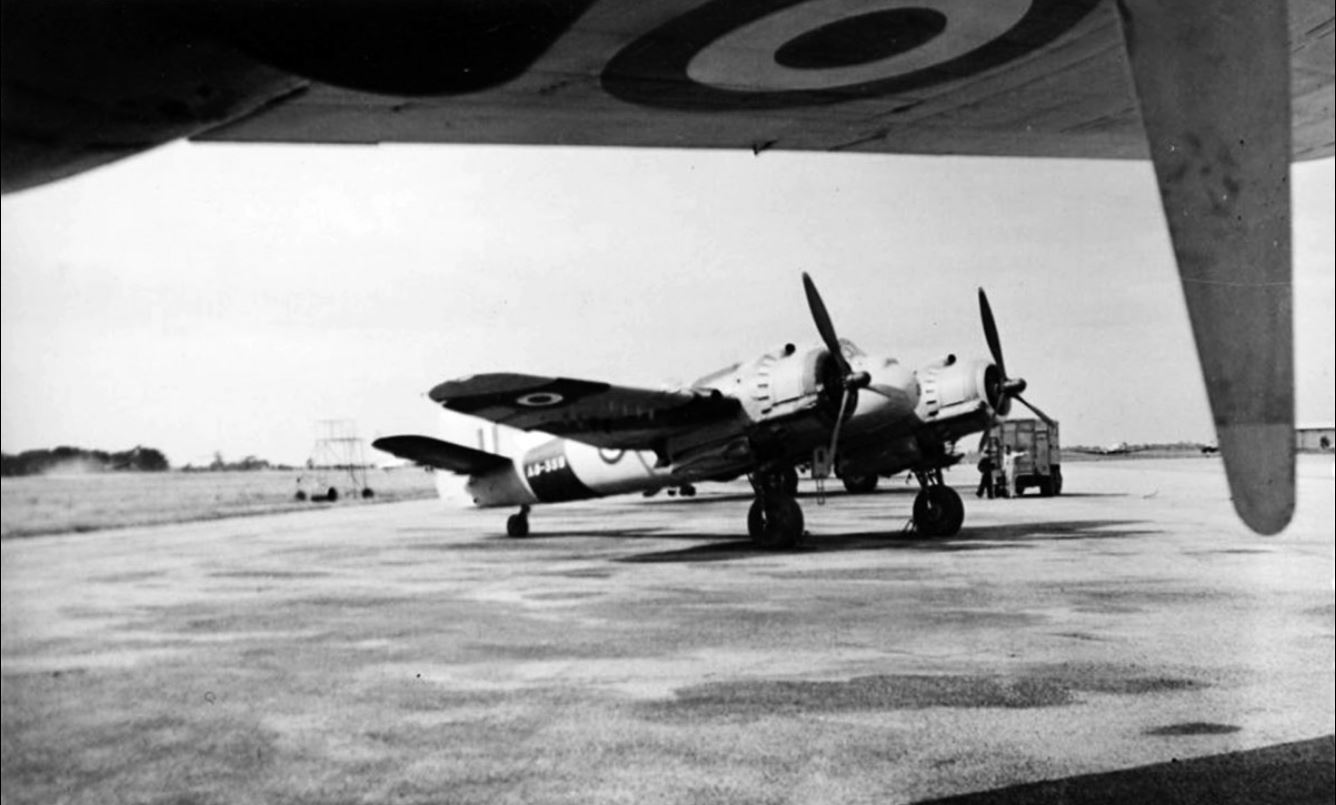No. 30 Squadron RAAF
From Our Contribution
 March 1943 a 30 Squadron Beaufighter returning from a strike on Lae AWM P01273.005 | |
 | |
Brief History
No. 30 Squadron, the original Auslralian Beaufighler squadron, was formed at Richmond, New South Wales, on 9 Mar 1942, as a long range fighter unit. The Squadron staged at Bohle River, Townsville on its way north, and it was from there that the Squadron opened its operational record, with three of 1ts aircraft being detailed to operate with torpedo carrying Beauforts of 100 Squadron and three Hudsons of 6 Squadron in an attack on a japanese cruiser and destroyer. One of the Squadron's aircraft crashed on take off.
On 12 Sep 1942, 30 Squadron arrived in New Guinea, bringing with it 23 Beaufighters, which later became known as 'Whispering Death' by the Japanese. The squadrons role changed to that of an Attack Squadron, and on 17 Sep 1942 they had a major success in an attack on a concentration of Japanes barges at Sananda Point and Buna Beach. The squadron carried our numerous sorties against Japanese troops and installations on the New Guinea coast as well as theiur installations inland in support of the Australian troops that were then forcing the Japanese back to their landing points and then as they tried to escape further north. On 17 Nov 1942 a raid on the Lae airstrip resulted in eight enemy aircraft either damaged or destroyed along with personnel. On 28 November another raid on Lae airstrip caused the enemy further losses.
1943 opened with a bu~y itinerary for the Beaufightcrs. Troop concentrations, grounded aircraft, barges, small shipping, enemy supplies and dumps, and landang parties were the chief targets for 30 Squadron which flew a large number of missions before they enjoyed a lull for the next three months. I June 1944 the squadron movd to Tadji, near Aitape in north west New Guinea. Soon after they relocated to Noemfoor, and then to Morotai on 2 Mar 1945 to prepare for their role in the liberation of Borneo.
On 3 May 1945 the Squadron's advance group boarded HMAS Manoora and HMAS Westralia for Tarakan, disembarking on 7 May 1945. The remainder of the Squadron and their equipment followed in a Landing Ship Tank (LST) convoy which arrived on 16 May 1945. With cessation of hostilities, the Squadron departed Tarakan on 2 Dec 1945 for Sydney where the squadron was disbanded at Deniliquin on 15 Aug 1946. Sixty four memers of the Squadron died while serving with it.
Individual Awards
- 1 x Order of the British Empire
- 2 x Distinguished Service Orders
- 25 x Distinguished Flying Cross
- 1 x Distinguised Flying Cross and Bar
- 1 x Distinguished Flying Medal
- 3 x Mentioned in Despatches
Aircrew
- John Chadwick Meachem 19 Sep 1944 - 15 Jul 1945
Notes
Content has come from Units of the Royal Australian Air Force - A Concise History - Volume 2 Fighter Units - Australian Government Publishing Service - 1995 pages 26 - 29